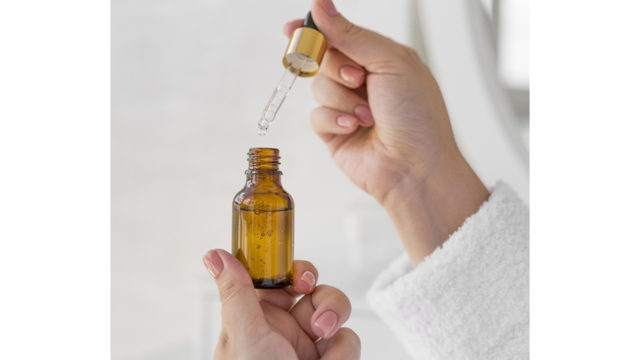You’ve probably figured out by now that there is a whole alternate galaxy out there where terms like niacinamide, hyaluronic acids, AHAs, BHAs, peptides, ceramides, and more exist. Now if you are a simple CTM (cleanse-tone-moisturise, umm, hello!) girl, it’s easy. You wake up, do your skincare and check out. But if you are an ambitious soul, wanting to learn more about skincare, then skincare actives are a whole new area you can get into. Use this awesome homemade face toner for cleansing your pores easily.
What Are Skincare Actives?
A skincare active is an ingredient that goes in a skincare product. But unlike a regular ingredient, this is an ‘active’ ingredient which means it ‘actively’ works to improve the general appearance of your skin. It does this by acting at a very deep cellular level. Because skin actives often have one focused job, they do it with all their might and that’s why they are often ‘potent’ or ‘concentrated’ – which means they often need a supporting crew (carriers) to give their best performance.
Different actives address a multitude of skincare woes like acne, fine lines, wrinkles, dullness, skin sagging, acne, spots, even crow’s feet, or dark circles. And they can be easily worked into your normal skin routine, with some golden rules in mind. When working with skin actives it is really important to choose quality formulas from reputable (don’t read expensive!) retailers. Labels can be confusing and packaging misleading. Here are some quick and easy to follow home remedies for dull skin which you can try.
Here are some quick tips to keep in mind when using skincare actives:
- Get the sequence right. For each skincare active to be effective, you need to layer them in a way that doesn’t cancel out the previous product’s benefits.
- Use them in the right combinations, and your skin will begin to look much better over time. Pair them wrong, and you may see your skin suffer.
- Start using them early. In our 20s and early 30s, skin cells re-build very fast. Hence the ‘youthful’ glow. As we hit our mid-30s, skin cell turnover slows down. Dullness, lines/wrinkles, and puffiness start creeping in.
- Actives that are used at night help treat and repair your skin. Actives that are used in the morning prepare and protect your skin.
The Channel 46 caught up with Dr Vrushali Salve, an expert Dermatologist from the online beauty consultation platform, Smudg. She helps us understand the most-widely popular skincare actives and how to use them.
1. Niacinamide Acid
Keywords to remember: Anti-inflammatory, anti-pigmentation, anti-irritation, oil-regulating
Commonly called B3, Niacinamide works with most skin types (although it reads acid!). It is commonly found in serums, moisturisers, body lotions, and spot treatments, and should be preferably used at night.
2. Retinoid (An Umbrella Term For Retinols)
Keywords to remember: Anti-aging, anti-pigmentation, fine-line minimising, antioxidant-rich
Retinoids / Retinols (less concentrated form) work with most skin types. It’s a star ingredient for fighting acne, promoting skin renewal, and boosting skin collagen for younger-looking skin.
The trick to using retinol is to:
- Introduce it slowly (in small quantities) into your routine
- Use strictly at night
- Never use on active on retinol
- Never mix with AHAs or PHAs
Instead, go for products that have a combination of Retinols and Hyaluronic Acid or Retinols with BHAs.
3. Vitamin C
Keywords to remember: Skin glow, anti-tan, fine-line minimising, anti-pigmentation
Vitamin C works with most skin types and is commonly found in serums, moisturisers, and cleansers. If you are using vitamin c in serum form, limit usage to nighttime. That said, cleansers and moisturisers have milder concentrates of vitamin C and can be used day or night. Opt for products that have a combination of vitamin C and retinols or vitamin C with AHAs for maximum effect.
4. AHAs (Alpha-Hydroxy Acids)
Keywords to remember: Exfoliating, skin-rejuvenating, spot-fading, fine-line minimising
AHAs is an umbrella name for commonly known Glycolic Acid, Lactic, and Mandelic Acid. AHA is a powerhouse ingredient that works with most skin types and is commonly found in toners, moisturisers, and serums. Products with smaller concentrates of AHAs (3%-5% tops) are safest to use at night. Opt for products that have a combination of Vitamin C and AHAs, or AHAs with Hyaluronic acid, or AHAs with BHAs.
5. BHAs (Beta-Hydroxy Acids)
Keywords to remember: Exfoliating, dead-cell removal, pore minimising
BHAs or Salicylic acid works well with oily skin types or acne-prone skin. Products with smaller concentrates of BHAs (3%-5% tops) are safest to use and can be used morning or night. Opt for products that have a combination of Retinol and BHAs, or BHAs with Hyaluronic acid, or AHAs with BHAs.
6. Hyaluronic Acid
Keywords to remember: Moisturising, skin firming, fine-line minimising, calming, hydrating
Quite easily the most loved active, this easy-going ingredient works well with most skin types but is especially great for dry skin. It’s commonly found in cleansers, moisturisers, and serums, and can be used morning or night. Opt for products that have a combination of Hyaluronic Acid with Retinol, or Hyaluronic Acid with AHAs or BHAs for maximum impact.
For more such skincare and other desi content, join our community to participate in interesting conversations







